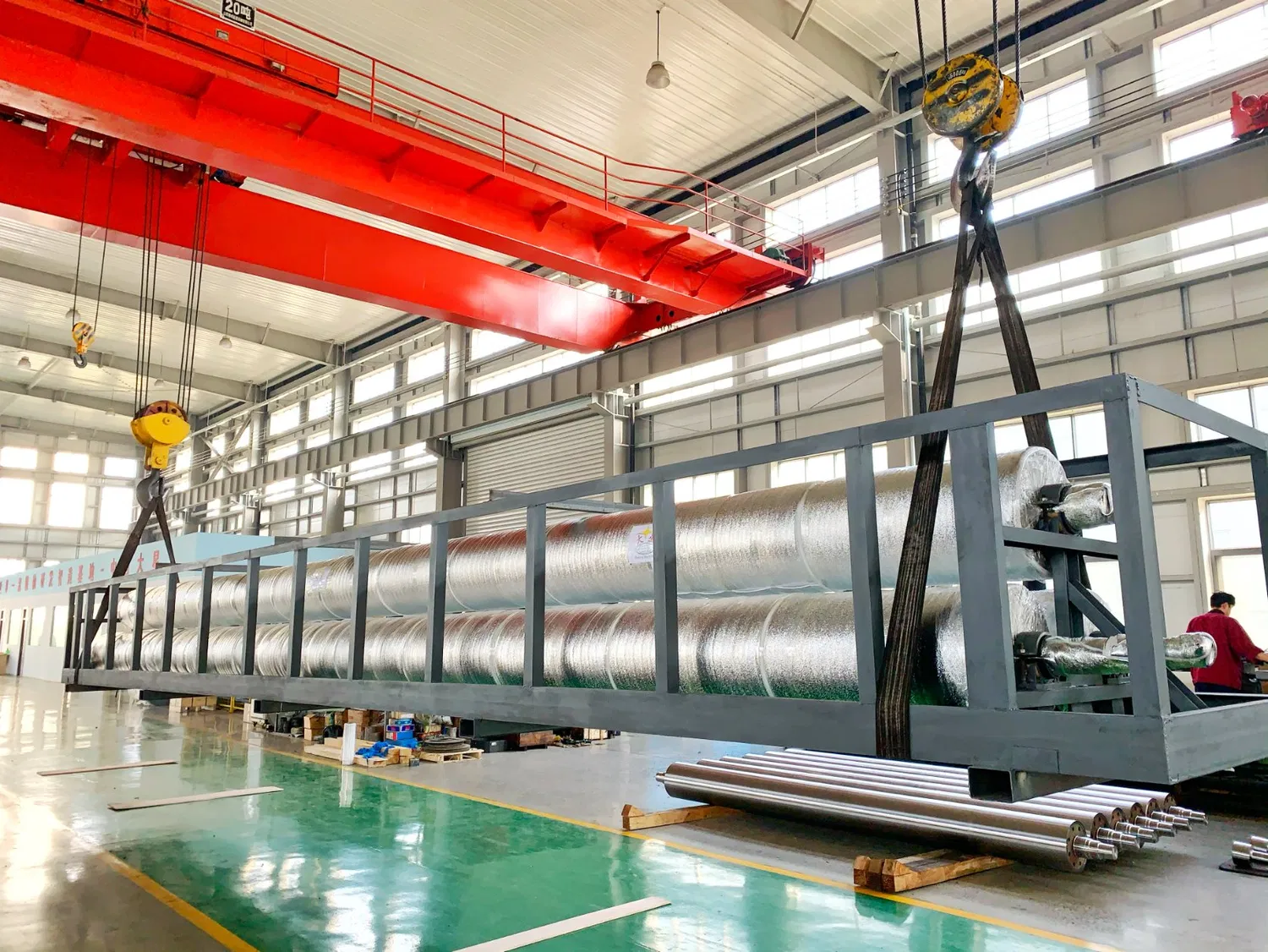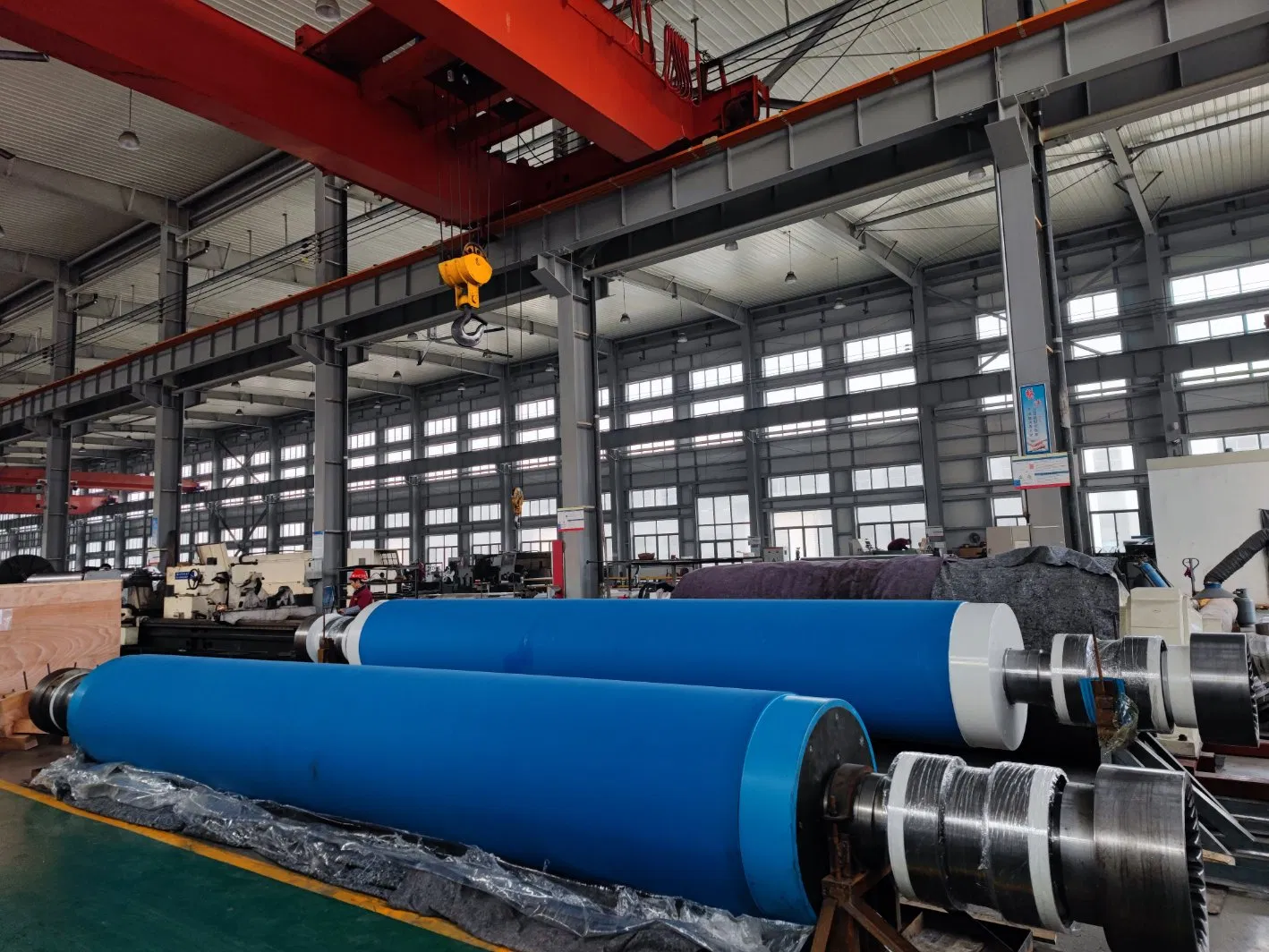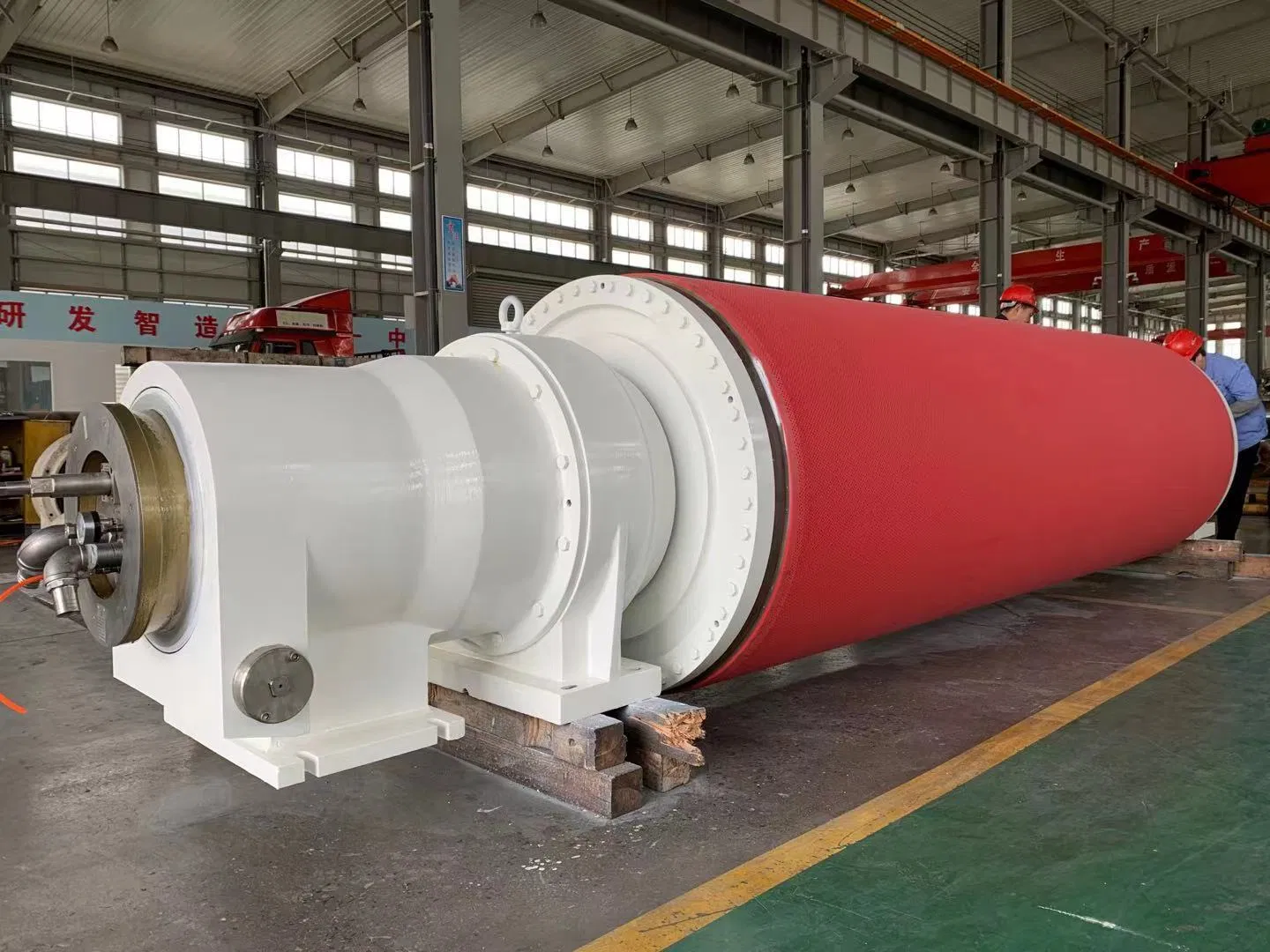Frankly speaking, in the intricate world of industrial manufacturing, every component plays a pivotal role. Yet, some stand out for their sheer impact on efficiency and product quality. The blind hole press roll is undoubtedly one such unsung hero, particularly within the pulp and paper industry, but also in other sectors requiring efficient liquid extraction. To be honest, understanding the nuances of how to effectively supply blind hole press roll components is not just about logistics; it's about appreciating the engineering marvel they represent and their critical function in high-speed production lines.
Have you ever wondered what goes into creating a perfectly dewatered sheet of paper, or how textiles are processed to remove excess moisture quickly and uniformly? Often, the answer lies hidden within the sophisticated mechanics of a press section, where the blind hole press roll performs its vital duty. This article will delve deep into the world of these specialized rolls, exploring their design, applications, and, most importantly, the strategic considerations involved in their procurement and supply. We'll uncover why their unique design is so crucial and what it takes to ensure a reliable supply blind hole press roll solution for demanding industrial environments.
The Anatomy of a Blind Hole Press Roll: Engineering for Efficiency
At its core, a blind hole press roll is a highly engineered cylindrical component designed to remove water from a web of material, typically paper, non-wovens, or textiles, through mechanical pressing. What sets it apart from other press roll designs—like those with through-drilled holes or grooved surfaces—is its distinctive pattern of "blind" holes. These are holes that do not penetrate the full thickness of the roll's shell but instead terminate within the shell material. This seemingly simple design choice has profound implications for performance.
The Science Behind the Holes
The primary function of these blind holes is to provide temporary storage for the water squeezed out of the material web as it passes through the nip (the contact point between two rolls). As the web enters the nip, pressure is applied, forcing water out. Instead of being reabsorbed by the web or flung off haphazardly, this water is collected efficiently within the blind holes. As the roll rotates out of the nip, centrifugal force and the subsequent release of pressure cause the water to be ejected from the holes, often into a save-all pan, preventing rewetting of the material. This controlled water removal is critical for achieving high dryness levels and maintaining web integrity.
Interestingly enough, the precise diameter, depth, and spacing of these blind holes are meticulously calculated based on the specific application, material type, and desired operating speeds. These parameters directly influence the roll's dewatering capacity, its ability to maintain uniform pressure across the web, and its overall operational stability. Many experts agree that the optimal blind hole pattern is a complex balance, often requiring extensive R&D and simulation to perfect.
Key Components and Materials
A typical blind hole press roll consists of a robust steel or cast iron core, often covered with a specialized rubber or composite cover. The choice of cover material is paramount, as it directly interacts with the material web and influences the dewatering efficiency, wear resistance, and resistance to chemical degradation. Common cover materials include various rubber compounds (e.g., natural rubber, synthetic rubber, polyurethane) or advanced composite materials, each offering distinct advantages in terms of hardness, elasticity, and durability. The blind holes are precisely drilled into this cover material, sometimes even into the underlying shell, ensuring structural integrity and consistent performance.
The manufacturing process itself is a testament to precision engineering. It involves not only the meticulous drilling of thousands of blind holes but also dynamic balancing to ensure smooth, vibration-free operation at high speeds. Any imbalance can lead to premature wear, reduced dewatering efficiency, and even catastrophic failure, highlighting the importance of quality control in the manufacturing process.
Why Blind Hole Design is Crucial for Performance
The unique blind hole design offers several compelling advantages over other press roll configurations, making it a preferred choice for applications where maximum dewatering and consistent product quality are paramount. These advantages translate directly into operational efficiencies and cost savings for industrial facilities.
Enhancing Dewatering and Sheet Quality
One of the most significant benefits of blind hole press rolls is their superior dewatering capability. By providing dedicated void volume for water collection, they prevent the "hydraulic rewetting" phenomenon that can occur with plain press rolls, where water is squeezed out only to be reabsorbed by the web as it exits the nip. This leads to a higher dryness content of the material exiting the press section, which is critical for subsequent drying processes. A drier web means less energy is required in the dryer section, leading to substantial energy savings.
Furthermore, the uniform distribution of blind holes helps maintain consistent pressure across the entire width of the web. This uniformity is vital for producing a product with consistent thickness, density, and moisture profile. In the paper industry, for instance, this directly impacts the strength, printability, and overall quality of the final paper sheet. Achieving these high standards often relies heavily on the performance of optimized paper machine press rolls with blind hole designs.
Energy Efficiency and Operational Benefits
The link between dewatering efficiency and energy consumption cannot be overstated. Water removal through mechanical pressing is significantly more energy-efficient than water removal through evaporation in dryer sections. By maximizing dewatering in the press section, blind hole rolls directly contribute to reducing the energy footprint of the entire production line. This is a major driver for industries looking to cut operational costs and improve their environmental sustainability.
Beyond energy savings, blind hole press rolls also contribute to improved machine runnability. Their design helps manage water flow more effectively, reducing the likelihood of sheet breaks or web instability, especially at high operating speeds. This leads to increased uptime, higher production rates, and reduced waste. In my experience, facilities that invest in high-quality blind hole press rolls often report fewer operational disruptions and a smoother production flow.

Applications Across Industries: Where Blind Hole Rolls Make a Difference
While the pulp and paper industry is arguably the largest consumer and beneficiary of blind hole press roll technology, their utility extends to various other sectors that require efficient and precise liquid extraction from continuous webs of material. Understanding these diverse applications is key to appreciating the broad demand for a reliable supply blind hole press roll solution.
In the Pulp and Paper Industry
This is where blind hole press rolls truly shine. They are indispensable components in the press sections of virtually all modern paper machines, from those producing fine printing papers and packaging boards to tissue and specialty papers. Their role is to significantly reduce the water content of the paper web after the forming section and before it enters the dryer section. The effectiveness of the blind hole design directly impacts the paper machine's speed, energy consumption, and the quality of the final product. Different types of paper and board may require specific blind hole patterns and cover materials to achieve optimal results, making customization a key aspect of their supply.
For instance, in the production of high-speed newsprint, the ability to achieve maximum dryness with minimal rewetting is paramount, driving the demand for highly efficient blind hole designs. Similarly, in the production of corrugated board, the strength and stiffness of the linerboard and fluting depend heavily on uniform dewatering, a task at which high-performance blind drilled rolls excel.
Beyond Paper: Other Industrial Uses
The principles of efficient dewatering and uniform pressure application that make blind hole rolls so effective in paper manufacturing are also valuable in other industrial processes:
- Textile Industry: In the finishing stages of textile production, blind hole press rolls can be used to remove excess water from fabrics after dyeing or washing, preparing them for subsequent drying or chemical treatment. This helps in achieving uniform moisture content and reducing drying times.
- Non-Wovens Production: Similar to paper, non-woven materials (used in everything from wipes and filters to medical gowns) often require significant dewatering during their manufacturing process. Blind hole rolls help consolidate the fibrous web and remove water efficiently.
- Mining and Mineral Processing: While less common than in paper, some specialized dewatering applications for slurries or filter cakes in mineral processing might leverage similar principles, though the scale and material handling would be vastly different.
- Food Processing: Certain food processing lines that involve dewatering or pressing of raw materials could potentially utilize adapted versions of this technology, though hygiene and material compatibility would be critical considerations.
The versatility of the blind hole design underscores its importance as a critical component across a range of heavy industries, making the ability to supply blind hole press roll components a specialized and valuable service.
Navigating the Supply Chain: How to Supply Blind Hole Press Roll Effectively
Procuring blind hole press rolls is not a simple off-the-shelf purchase. It involves a complex interplay of technical specifications, manufacturing expertise, logistical challenges, and a deep understanding of the end-user's operational needs. For suppliers, mastering these aspects is crucial to providing a truly valuable service.
Identifying Reputable Suppliers
The first and most critical step in ensuring a reliable supply blind hole press roll is to partner with reputable manufacturers and suppliers. This isn't just about finding someone who can deliver; it's about finding a partner who understands the intricacies of press roll engineering, has stringent quality control processes, and can offer comprehensive support. Look for suppliers with a proven track record, certifications (like ISO), and positive client testimonials. A strong supplier will offer:
- Engineering Expertise: The ability to design and customize rolls based on specific machine parameters and desired performance outcomes.
- Material Science Knowledge: Understanding of various cover materials and their suitability for different applications, operating conditions, and chemical environments.
- Advanced Manufacturing Capabilities: Access to precision drilling equipment, dynamic balancing machines, and quality assurance protocols.
- After-Sales Support: Services like installation guidance, troubleshooting, and maintenance recommendations.
Frankly speaking, cutting corners on supplier selection can lead to premature roll failure, increased downtime, and significant production losses. It's worth noting that many experts agree that investing in quality from the outset pays dividends in the long run.
Customization and Technical Specifications
Blind hole press rolls are rarely generic. Each roll is typically custom-engineered to fit a specific machine and application. This means suppliers must be adept at working with detailed technical specifications, including:
- Roll Dimensions: Diameter, face length, journal dimensions.
- Hole Pattern: Diameter, depth, spacing, and angle of the blind holes. These are often proprietary designs optimized for specific dewatering needs.
- Cover Material: Type of rubber or composite, hardness (P&J or Shore D), and thickness.
- Operating Conditions: Speed, temperature, pressure, and chemical environment.
- Balancing Requirements: Dynamic balancing to specific ISO grades.
A capable supplier will engage in thorough consultations to ensure all these parameters are accurately captured and translated into the final product. This collaborative approach is what distinguishes a mere vendor from a true partner in the supply chain. Finding reliable press roll manufacturers who excel in this area is paramount.

Maintenance, Longevity, and Future Trends
Even the highest quality blind hole press roll requires diligent maintenance to achieve its expected lifespan and maintain peak performance. Furthermore, the industry is not static; continuous innovation is shaping the future of press roll technology.
Ensuring Optimal Performance Through Maintenance
Regular maintenance is crucial for maximizing the lifespan and efficiency of blind hole press rolls. Key maintenance activities include:
- Routine Cleaning: Preventing the accumulation of fibers, debris, or chemical residues in the blind holes and on the roll surface is vital. Clogged holes reduce dewatering efficiency and can lead to uneven pressing.
- Cover Grinding and Crowning: Over time, roll covers can wear unevenly or develop flat spots. Periodic grinding and re-crowning (shaping the roll surface to compensate for deflection under load) are essential to maintain uniform pressure distribution and prevent sheet defects.
- Bearing Inspection and Lubrication: The bearings supporting the roll are critical for smooth operation. Regular inspection, lubrication, and replacement when necessary prevent costly breakdowns.
- Nip Impression Analysis: Regularly checking the nip impression (the contact area between two rolls) helps identify any irregularities in pressure distribution, indicating issues with roll alignment or crowning.
- Vibration Monitoring: Monitoring vibration levels can provide early warnings of imbalance, bearing wear, or other mechanical issues, allowing for proactive maintenance.
In my experience, a robust preventative maintenance program, coupled with access to expert technical support from the supplier, is the best strategy for ensuring the longevity and consistent performance of these critical components.
Innovations and the Future of Press Roll Technology
The field of press roll technology is continuously evolving. Future trends in the supply blind hole press roll market are likely to focus on:
- Advanced Cover Materials: Development of new composite materials offering enhanced wear resistance, chemical inertness, and improved elasticity for even better dewatering and longer service life.
- Smart Rolls: Integration of sensors within the roll to monitor temperature, pressure, vibration, and even moisture content in real-time, providing valuable data for predictive maintenance and process optimization.
- Sustainable Manufacturing: Increased focus on environmentally friendly manufacturing processes, reduced energy consumption in production, and the use of recyclable or bio-based materials for roll covers.
- Optimized Hole Geometries: Further research into computational fluid dynamics (CFD) and advanced simulation techniques to design even more efficient blind hole patterns for specific applications, pushing the boundaries of dewatering efficiency.
- Digital Twin Technology: Creating virtual models of press rolls to simulate performance under various conditions, optimize maintenance schedules, and predict potential failures before they occur.
These innovations promise to make blind hole press rolls even more efficient, durable, and integrated into the broader industrial ecosystem, further solidifying their role as indispensable components in high-speed manufacturing.

Conclusion
The blind hole press roll is far more than just a cylindrical component; it's a testament to precision engineering, playing a foundational role in the efficiency and quality of countless industrial processes, most notably in the pulp and paper industry. From its unique design that expertly manages water removal to its profound impact on energy consumption and product consistency, its importance cannot be overstated.
To effectively supply blind hole press roll components requires a deep understanding of their technical intricacies, a commitment to quality manufacturing, and a collaborative approach with end-users. As industries continue to strive for higher efficiency, reduced costs, and greater sustainability, the demand for high-performance, reliably supplied blind hole press rolls will only grow. Investing in the right technology and partnering with expert suppliers is not just a choice; it's a strategic imperative for achieving peak industrial performance. What challenges have you faced in optimizing dewatering processes in your operations?
For more detailed information, please visit our official website:supply blind hole press roll
About the author: Dr. Alistair Finch is a seasoned industrial engineer with over two decades of experience specializing in dewatering technologies and precision roll manufacturing. His expertise spans the pulp and paper, textile, and non-woven industries, where he has advised numerous companies on optimizing their press sections for efficiency and product quality. Finch is passionate about sustainable manufacturing and the integration of advanced materials in industrial applications.


